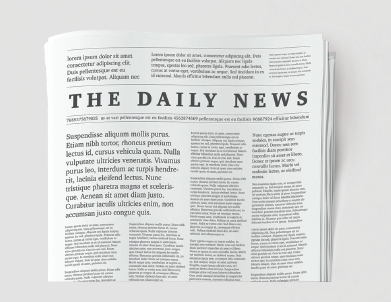HOW TO TELL FAKE NEWS FROM REAL NEWS
Laura McClure is an award-winning journalist and the TED-Ed Editor.
In November 2016, Stanford University researchers discovered that across the US, many students can’t tell the difference between a reported news article, a persuasive opinion piece, and a corporate ad. This lack of media literacy makes young people vulnerable to getting deceived by ‘fake news’. In order to strengthen your ability to tell real news from fake news, you can use these five questions:
1. ................................................... Real news contains the real byline of a real journalist dedicated to the truth. Fake news does not. Once you find the byline, look at the writer’s bio. This can help you identify whether the item you’re reading is a reported news article (written by a journalist), a persuasive opinion piece (written by an industry expert with a point of view), or something else entirely.
2. ................................................... Real news will include multiple primary sources when discussing a controversial claim. Fake news may include fake sources, false URLs, and/or ‘alternative facts’ that can be disproven through further research. When in doubt, dig deeper. Facts can be verified.
3. ................................................... Look at the publication date. If it’s breaking news, be extra careful.
4. ................................................... Real news is published by trustworthy media outlets with a strong fact-checking record, such as the BBC, NPR, ProPublica, Mother Jones, and Wired. To learn more about any media outlet, look at their ‘about’ page, and examine their published body of work. If you get your news primarily via social media, try to verify that the information is accurate before you share it. On Twitter, for example, you might look for the blue ‘verified’ checkmark next to a media outlet name to double-check a publication source before sharing a link.
5. ................................................... Fake news is designed to make you feel strong emotions, so if you read a news item that makes you feel super angry, pause and take a deep breath. Then, double-check the news item’s claims. If you get in the habit of asking all 5 of these questions whenever you read a news article, then your basic news literacy skills will start to grow stronger.
(Adapted from Ted Blog)

